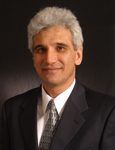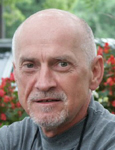Bruno Breitmeyer, professor of psychology at UH, and Haluk Ogmen, chair and professor of electrical & computer engineering at the UH Cullen College of Engineering, have published their third book in two years on visual perception and consciousness, specifically on how the brain processes various visual stimuli at conscious and unconscious levels.
The book titled "Experimental Phenomena of Consciousness: A Brief Dictionary" was written in collaboration with Talis Bachman, professor of psychology at the University of Tartu, Estonia. Specifically, the work is a collection of consciousness phenomena in which awareness emerges as an experimental variable.
"We take for granted what we perceive," said Ogmen. "Our visual system receives a huge amount of information, some of which reaches our awareness. On the other hand, the brain also modulates behavioral responses by processing information at an unconscious level. We are exploring factors that control unconscious versus conscious processing of information in the visual system."
Breitmeyer and Ogmen have recently published two other books . In 2006, "Visual Masking: Time Slices through Conscious and Unconscious Vision" was published by Oxford University Press. The book is a substantially revised new edition of a classic text published by Breitmeyer in 1984. It explores the visual masking phenomenon as a paradigm to elucidate the temporal dynamics of conscious and unconscious processes and the fate of those stimuli that remain at an unconscious level.
They also published "The First Half Second: The Microgenesis and Temporal Dynamics of Unconscious and Conscious Visual Processes" in 2006. This edited book, published by MIT Press, contains contributed chapters by the participants of an NIH-funded international workshop on temporal dynamics that Breitmeyer and Ogmen organized. The book examines the time-course of visual processes from the moment a stimulus is presented until it registers in a behavioral response or in consciousness a few hundred milliseconds later. The contributors analyze this "first half second" of visual processing—known as its microgenesis—from a variety of perspectives, including neuroscience, neuropsychology, psychophysics, psychology and neural network modeling.
Both professors are currently participating faculty members in the college's Center for Neuro-Engineering & Cognitive Science.

